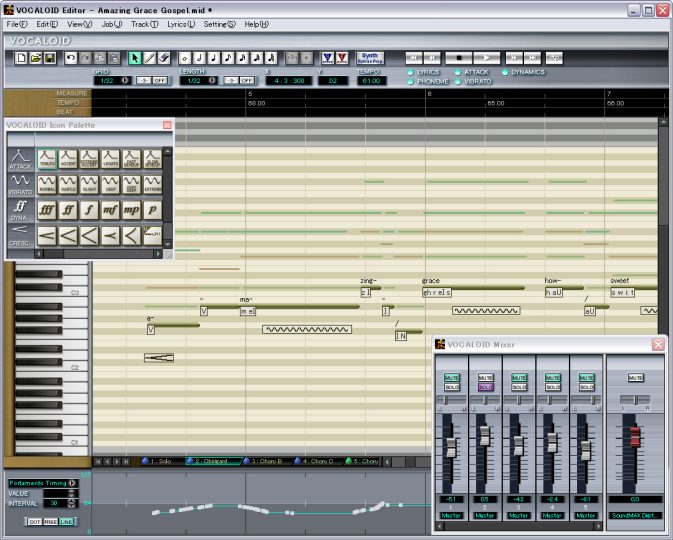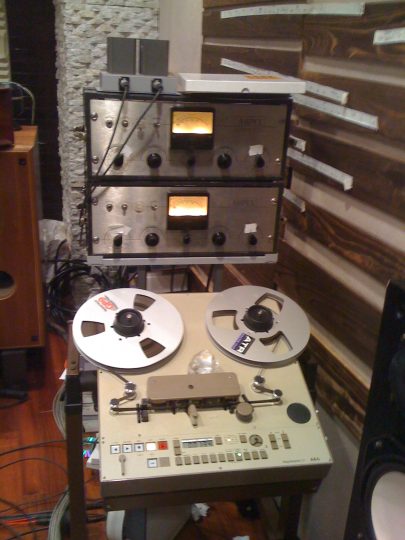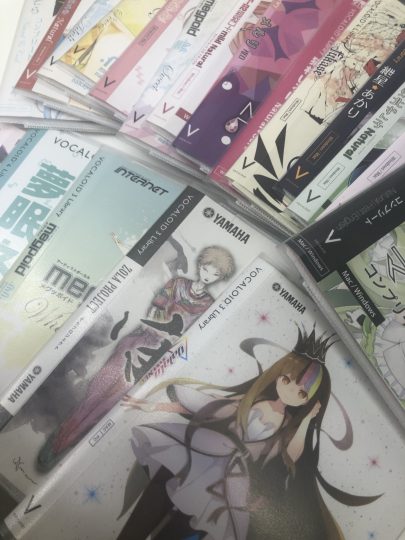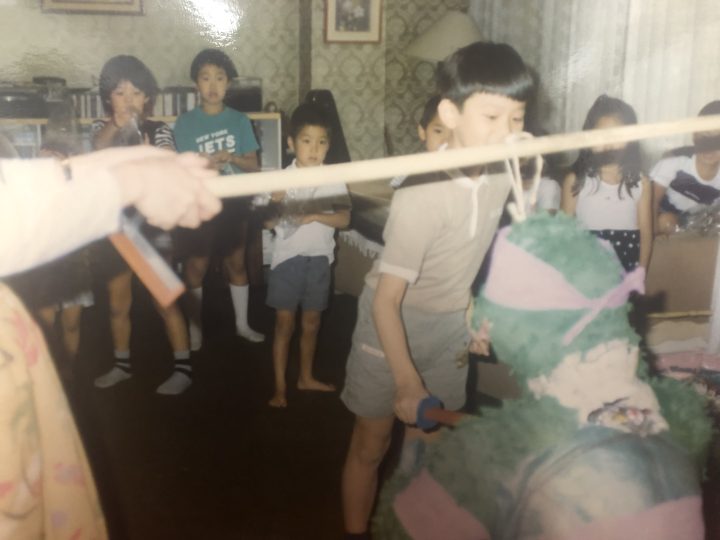2023.09.06
Vocalo Producers with VOCALOID – EHAMIC – Language as rhythm. Coexistence between people and computers expressed with VOCALOID.
VOCALOID, which uses synthetic singing voice technology developed by Yamaha, has continued to advance since it was first released in 2003. The latest version is VOCALOID6, which features VOCALOID:AI. Other companies also sell voicebanks for VOCALOID. A genre has been established for music sung by virtual singers created using singing voice synthesis technologies. Called “Vocalo” in Japanese, numerous tracks of this now beloved genre are uploaded every day. “Vocalo Producers with VOCALOID” is a series of special interviews that delves into how the producers who sustain Vocalo culture first encountered the VOCALOID singing voice synthesis technology developed by Yamaha and what their relationships with it are now.
This time, we spoke with EHAMIC who is involved in diverse activities, including as a librarian and a singer-songwriter. They have recently received much attention as the only Japanese artist who contributed to the soundtrack of Guardians of the Galaxy Volume 3, the third movie in the popular Marvel movie series, which reached the number one position in the Billboard 200 Chart.
Profile of EHAMIC

Librarian. Singer-songwriter.
This artist is attracting attention for their avant-garde expressive work, including creating an album using VOCALOID.
Their media exposure began with performing in a “Google Chrome × Hatsune Miku” TV commercial and providing the theme song for the LAWSON convenience store chain. In addition to their artistic activities, they have also become a writer and TV personality. EHAMIC is also providing music that fuses analog and digital while being both delicate and bold to various places.
First encounter with VOCALOID was during study of phonetics
Y: Thank you for speaking with us today. First of all, I am interested in your stated profession as a librarian/singer-songwriter. Please tell us about your profile.
E: Publicly, I call myself a “librarian and unusual music artist.” Since I receive many projects that cannot be fulfilled without incorporating some kind of gimmick or contrivance, I do a lot of odd work that normal musicians rarely have a chance to experience, and so the “unusual music artist” title (laughs).
Y: Please tell us about what inspired you to start writing songs and making music as well as the instruments that you can play.
E: When I was an infant, for some reason my parents focused on music education. When I was five years old, I passed a test to enter a composition school for talented students and went there for one year. I am still working with the know-how that I got from that time. The class was the kind that taught the fundamentals of the fundamentals in a manner suitable for children, and I recall really learning those fundamentals.
Piano is the instrument that I can play. Another thing is that we lived in Mexico when I was small and at that time the violinist Yuriko Kuronuma was also staying there. So, my parents thought, “We want you to learn with Ms. Kuronuma!” (Laughs.) I practiced violin for a year but did not retain much. Since then, it seems like I have continued trying various instruments.
Y: Where did you first encounter VOCALOID?
E: My university major was library studies. In it there is a field called “media studies,” and I took a seminar on phonetics. Phonetics includes everything from handling physical models of real throats and tongues to the world of text to speech, which uses software to synthesize voices, as well as natural language processing, and so on. VOCALOID was used as one example of synthesized voice technology. Then, I learned that VOCALOID had been developed and was being sold. This was the time of VOCALOID1. So, I encountered it not for music production applications but rather as a software example.

Y: What was your impression of VOCALOID1?
E: I thought it was an extension of text to speech. So, at first, I had no interest in using it for composing songs. “Make software sing?” Maybe it was resistance to that. I also had a fixed idea about songs, and I did not think about trying to use it in composition myself.
Then, was it around the time of VOCALOID2? When software called “PRIMA,” which used a database of the voice of a soprano singer, was released, my thinking changed to “VOCALOID is amazing!” I could say it was sensational experience.

In part because I had studied phonetics, I think I looked at it from a perspective similar to that of a developer at first, analyzing the technology, for example. After that, what changed my perspective to using it myself was, of course, Hatsune Miku. From the demo stage, I thought this might the usable for singing. When I actually tried it and input lyrics, I was surprised by the reproduction as singing.
As software, it was novel, and the idol-like character was standing there while the pitch range was also wide. I thought this could effectively perform lead vocals. That was the first time I purchased VOCALOID and began using it.
Coexistence between people and computers expressed with VOCALOID
Y: Please tell us if you have any memories of when you began using VOCALOID in songwriting.
E: Hatsune Miku appeared in 2007, and I thought I would try creating songs and recording, but Vocalo music was still not well known at the time. So, actually, when I incorporated VOCALOID into music, I was viewed with distaste. The headwinds were strong.
Y: At the time, it might have been viewed as something like a Niconico video subculture.
E: That’s right. One time, I wanted to record drums using Hatsune Miku vocals as a guide, so I prepared the data and tried to take it to a recording studio, but was refused. “We do not really understand VOCALOID so we cannot accept the work.”

Y: Despite this, what was your reason and motivation to continue using VOCALOID.
E: I wanted to make songs with VOCALOID. That was all there was to it.
I used to be satisfied just by completing a song and that was the end of it. As Niconico became popular, however, the culture of releasing songs to the public became established, so I tried to follow this. That was around when I graduated from college, and I did not have a way to let distant friends listen to music. By uploading songs, though, they could all listen to my music, so that was the beginning of uploading.
I did not intend for people other than my friends to listen to it, but I accidentally caught the wave when Niconico became popular. Having people that I did not know listening to my music more and more became one motivation. This was also my first experience making videos and I had a lot of difficulties, but I also had help from many people thanks to connections made through the Internet.
More than any other motivation was that I genuinely fell in love with the technical capabilities of VOCALOID.

Y: Is there a difference in the way that you think about creating songs using VOCALOID and songs to be sung by human beings?
E: There was before. There were requests that people wanted songs to be Vocaloid-like, so I sought to differentiate them. I think there were a lot of cases emphasizing comparison of human voices and Vocaloids.
But, now I am not really making that distinction personally. That might be because I have come to view Vocaloid characters as performers. I also think that VTuber culture has also probably been an influence. As having virtual characters singing has become natural in popular culture, I think that Vocaloids have come to be seen as individual performers with their own personalities. Thinking this way, there is not much difference in the feeling when providing music to artists.
Y: Have there been any changes in your musical activities as a result of starting to use VOCALOID?
E: I do not know about myself, but I think that VOCALOID has changed the world.
Since the time I was refused by the studio, I have had the ideal of doing things from start to finish. I have thought to have Vocaloids and people perform together equally and continue taking on the theme of relationships between people and computers. There is just that I have performances done by human beings without using DAW software as much as possible. I think that by doing this I can probably bring out of the coexistence of people and computers. There might be expressions that were not possible when making music only with human beings.
Just as VOCALOID has changed the world, because I am using it, perhaps I also have something like a mission that I ought to be sending a message to this world.
[Haruno Sora] The spell of love is Sora-sora written by EHAMIC [Original Song]https://www.nicovideo.jp/watch/sm33511286
VOCALOID accepts the personality of the creator. EHAMIC reached the world with “Koinu no Carnival,” a song made using words as rhythm
Y: I feel that your works have a strong sense of message. What kinds of concepts do they have?
E: For example, when I was first making songs with Hatsune Miku in VOCALOID2, I released an album that was only available as an LP record. That album was called “to-kyo.” The jacket had an image of Hatsune Miku and Tokyo Tower, but, that Tokyo is a little different from the one that we know well actually. That Tokyo is on a different planet. I wrote the lyrics using an imaginary language with the concept that the songs on that album are hits in the Tokyo of that other world where people like Hatsune Miku live.
[Hatsune Miku] tokyo / ehamiku [original] Creator: EHAMIChttps://www.nicovideo.jp/watch/sm8136444
If we take Hatsune Miku as a 17-year-old girl, she would probably have worries about love and relationships with friends. In that album, there are songs about various human activities, and people in cities have multiple personalities, so that might have struck the images of Hatsune Miku that the listeners each have.
But… I wrote “proper” lyrics about the conflict of one girl, multiple personalities and other issues. I regretted doing ordinary song composition by “communicating with words.”
After that, other than in songs for work, I thought I wanted to break away from words as language in songs. I continued to shift toward “words as rhythm.”
“Koinu no Carnival – from the Minute Waltz,” which was used in “Guardians of the Galaxy Volume 3,” is one that I made during the period when I was trying to get away from words, so the lyrics are not interesting if you read them (laughs). I wrote them thinking that there could not be a message.
I think that being able to do extreme things like this, however, is a good thing about VOCALOID. VOCALOID provides a large vessel that can accept a wide spectrum. It can handle everything, from the concerns of teenagers to the slow love songs of twenty-somethings, brutal expressions and the personalities of creators. I think that this is something only possible with VOCALOID.
Y: Please tell us about the response since the release of “Koinu no Carnival – from the Minute Waltz.”
E: First of all, in the same series, I also made many songs using the Galaco VOCALOID released by YAMAHA, so I want people to also listen to them. I am slipping in some promotion (laughs). Until now, I have received many opportunities related to content used within Japan, but the content is global this time. I have many relatives living overseas. Thanks to this being able to reach various places around the world, I also received reports of people going to see it in movie theaters. I thought, I was finally able to be involved in content that my family would recognize.

But, that made me aware of something. My inspiration for uploading to Niconico was that I wanted my friends to hear my music. Even though this one has become a massive release, what I wanted after all was for my family to hear it. I was reminded that I am living in a small world, and I was shocked that I did not have a great desire to become a big star (laughs).
Y: Maybe it is especially because of using words as rhythm that it has been appreciated overseas. Could it be that a lot of overseas experience is an influence?
E: I am sure that is so.
For example, after living abroad, when you return to Japan, people treat you like an extraterrestrial. In school life it was especially noticeable. I was almost always on the away team. However, even on the away team, I believe that I was able to be accepted by many people because I established my identity as an extraterrestrial.

Now, the reason that I use VOCALOID in ways that are different from others could be because I am trying to keep being an extraterrestrial. I believe that I have an unconscious desire to move further and further away from the mainstream.
Y: Finally, please say something to people who want to become Vocalo producers or try creating songs using VOCALOID.
E: My fans include many people who want to hear sounds they have never heard before. So, I want to continue responding to that desire. Perhaps for that reason, I seek the same kind of mindset in other creators too. “I have something I want to express!” For people thinking this, VOCALOID will accept everything, so anything is fine, just try having it sing for you. I am always thinking that I want individualistic creators to be cultivated rapidly.
Y: Thank you for talking to us about the themes and concepts in your creative work. This was a very interesting and valuable conversation. I am looking forward to your future creations. Thank you very much for your time today.
E: Thank you too!
Article : SoundWorksK Marketing LLC.